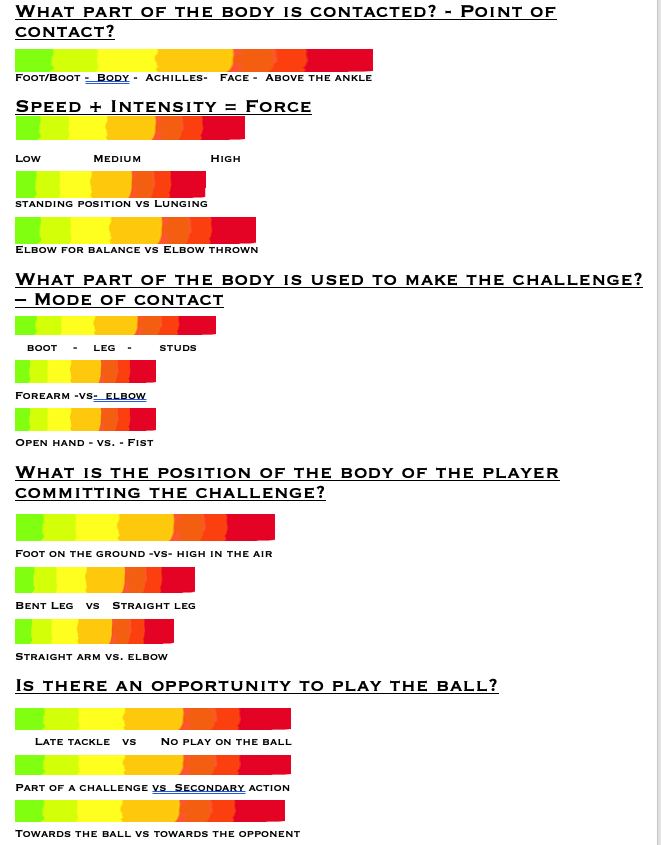Into The Book - Episode 5
Welcome to Episode 5 of the CRO Blog Into The Book. We are in heart of the season for our the UPSL and FFL Seasons at the Semi Pro Level as well as going strong in all the Youth Classic leagues. Now that we are in full swing of the season we’re going to focus on this Episode on parts of the game that we have seem come up in matches during the season so far.
We will look at ways to help us make on field decisions between Carless (No misconduct / Cards), Reckless (Cautions / Yellow Card), and Serious Foul Play (Red Card / Send Off) as well as dealing with the emotions that come from moments in games with these situations. In addition to that we will look at the importance of correct Supplemental Reports when we do have to use them for Red Cards and other issues.
Challenge Considerations
As Referees when we see a challenge we are tasked with making a decision on if that is a foul or not. Today we’r want to go below the surface of this decision to talk about how we decide between Careless, Reckless and Serious Foul Play when we blow the whistle for the foul. To do this we MUST use our Considerations that guide us in making the correct decision.
The Considerations are questions we ask ourselves in when the challenge happens. The picture to below shows what questions we must ask and what answer gets you no card, yellow card or a red card.
MATCH REPORTS AND CONSIDERATIONS
The match report on the left is a great example of detailed considerations used and seen by the referee. We would want this to result in a Red Card for Serious Foul Play instead of a Second Caution for Reckless Challenge.
The player left his feet which creates more force, did not make contact on the ball and contact the attacker on the ankle/shin. Looking at the considerations on the left. What does that get you to?
(Note that this is not the correct write up for second caution, click here to see correct write up for second caution)
Managing player Frustration
In the video to the right we see a hard foul with the hip / body of the Charleston Defender in Black. He charges in from behind with a medium amount of force. After the whistle the player shows frustration, possibly with the call or that his team has lost the ball and he has committed a foul. While we aren’t focusing on the misconduct for this clip, it is mixed considerations which can lead to a careless or reckless foul depending on the match and the player. When it comes to player management we’re going to go though two possible scenarios when dealing with the frustration of the player shown after the whistle.
Scenario #1 - What we actually see happen - Careless foul called no caution for dissent.
The questions we ask ourselves is, “Do I need to give a Yellow Card for Dissent?” - lets break down the moments after the whistle
Was it public? - Yes, it was a visual display, with the arms of frustration.
Was it provocative or personal toward the referee? - We would say no, it was quick and he put his head down and moved on.
Did it continue or was it a brief moment of frustration? This was one single quick moment of frustration
All of those answers lead us to no caution for dissent.
HOWEVER, this is a moment, as the referee does, to bring the player over and talk with them. After all, that wasn’t a small challenge. Bring the player over, talk with them and tell them. “look, I know you may not like that call, but that challenge was hard and you cannot come up and throw your arms like that after I make the call. Help me keep you out of the book, okay?”
We must use our tools as a referee, in this situation, they are tools other than cards. It is a tough line to find we must find the line between allowing players to be frustrated and express it and deal with, and cautioning, dissent.



